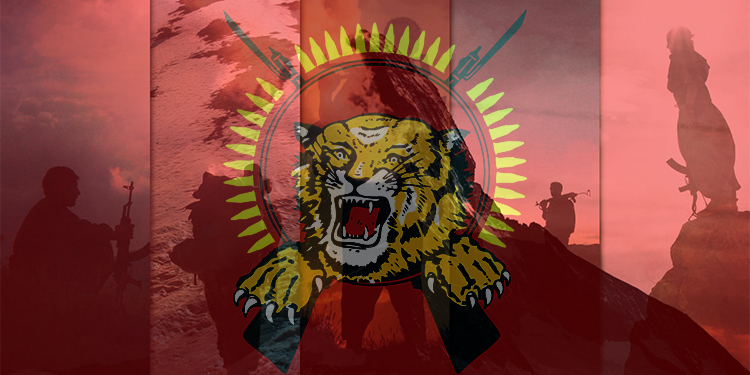NEWS CENTER – Tamil activist Agilan Varatharajah underlined that when the “Sri Lanka model” is mentioned, the genocide is actually being discussed, and said, “The discussion is that the genocide against the Kurdish people is also on the agenda. The Sri Lankan experience has shown that after the guerrilla movement has been massacred, ordinary people will also be slaughtered,” he said.
Sri Lanka implemented the genocide process against the Tamil people and guerrillas between 2008-2009. More than 70,000 people were massacred in the Tamil country when the Sri Lankan government announced on 18 May 2009 that it was ending the war. All the commanders and militants were slaughtered, including Probhakaran, leader of the Tamil Elam Liberation Tigers (LTTE). Following the liquidation of the Tamil Tigers, the Sri Lankan state, which occupied the Tamil country, started a frenzy of torture, rape and executions. Declaring “victory” after the genocide, the Sri Lankan government forced Tamils to celebrate by hanging flags over their homes. Not content with this, the regime attempted to completely destroy the legacy left by the guerrilla by constructing outpost buildings where the LTTE cemetery was previously located.
TURKISH POWER ALSO TAKES AN EXAMPLE
Inspired by the elimination of the liberation struggle of the Tamil people, Turkish state administrators also named the annihilation rhetoric against the Kurdish Freedom Movement as the “Sri Lanka model” since the early 2010s. The “Supposition Plan”, which was decided at the October 2014 meeting of the Turkish National Security Council (MGK), and implemented in 2015, was almost similar to the “Burying-Deletion Plan” bloodily terminated by the Sri Lankan army in 2009.
GENOCIDE IS CALLED MODEL
Tamil activists, who are currently able to carry out the freedom struggle of the Tamil people in exile, point out that there are serious similarities between the war concepts of the Turkish and Sri Lankan regimes. Agilan Varatharajah, one of the Tamil activists living in Germany, stated that he thinks so and called for the Kurdish people to be more sensitive. Varatharajah stated that when the “Sri Lanka model” was mentioned, genocide was actually discussed and said: “The Sri Lanka model means genocide. Discussing the Sri Lanka model is also putting the genocide on the Kurdish people on the agenda. Because the Sri Lankan experience has shown that after the guerrilla movement has been massacred, ordinary people will also be massacred.”
NO GUERILLA, NO RESISTANCE
Emphasizing that there is no solution but to fight against fascism, Varatharajah said, “Because in our example, you see what comes next. If the guerrilla movement is destroyed, you have to look at what comes next. What is coming is nothing but a very dangerous process for the society. “After the guerrilla movement has been destroyed, there is no resistance left,” he said. Stating that violence against women increased after the elimination of freedom fighters in his country, Varatharajah said, “You can’t do anything anymore. Again, genocide takes place in a cultural dimension as well,” he said.
THEY ALSO USED CHEMICALS
Tamil woman activist Laksi, on the other hand, reminded what happened during the war started within the framework of the concept of genocide against her country, and shared the following: “They carried out heavy bombing attacks and used chemical weapons. They threatened other sections of society and attacked civilian areas. Because of this, civilians were forced to migrate.”
AFTER THE MASSACRE, HE CALLED TURKEY
Recalling that one of the first foreign leaders that Sri Lankan President Mahinda Rajapaksa spoke with on the phone when he declared his victory over the Tamil people on May 18, 2009, the Turkish President Abdullah Gul, Tamil activist Laksi said, “They tried to export the war against the Tamils as a war against the Kurds.” .
KURDISH WOMEN’S MOVEMENT IS STRONG
Laksi noted that after the war there was a serious massacre of women in Sri Lanka and that this process was similar in Kurdistan, he drew attention to the following points: “Likewise, there is a massacre of women in Turkey. However, the Kurdish women’s movement has a great struggle against this policy of killing women and is fighting against the practices of the Turkish state.”




